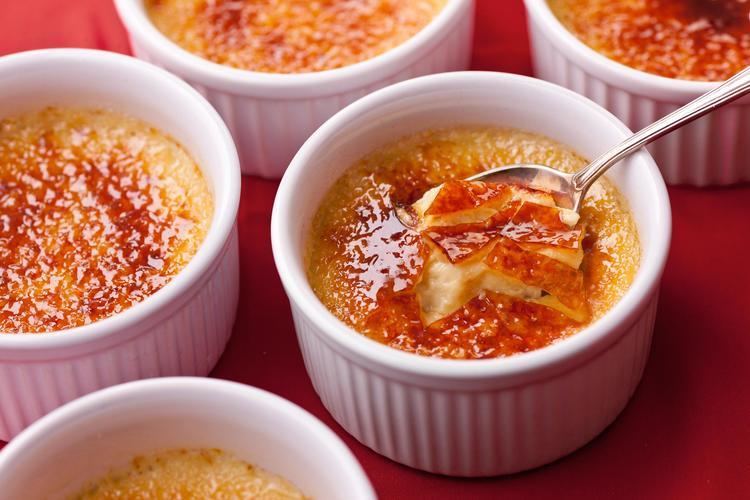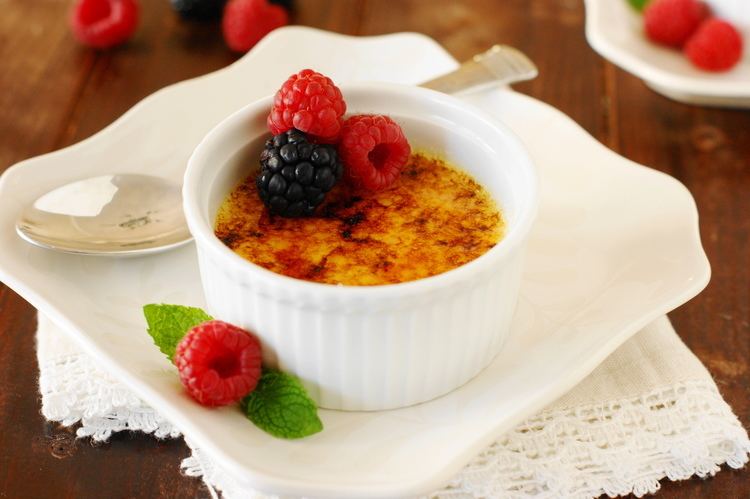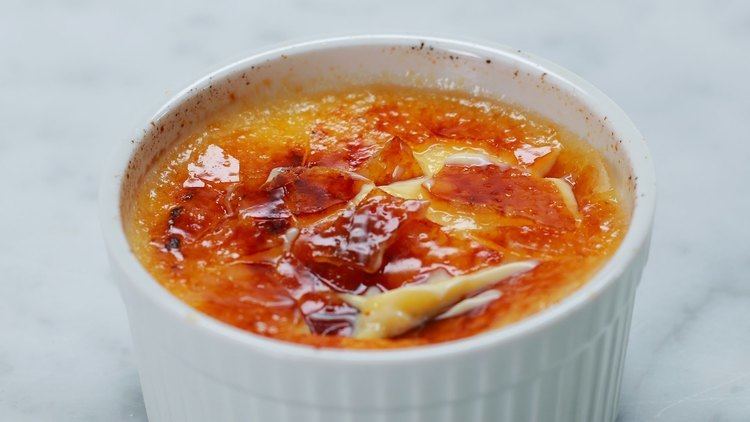Serving temperature Room temperature Main ingredients Custard, Caramel | ||
 | ||
Alternative names Burnt cream, crema catalana, Trinity cream Similar Dessert, Vanilla, Caramel, Sugar, Custard | ||
Recette de la cr me br l e la vanille par herv cuisine
Crème brûlée (/ˌkrɛm bruːˈleɪ/; [kʁɛm bʁy.le]), also known as burnt cream, crema catalana, or Trinity cream is a dessert consisting of a rich custard base topped with a contrasting layer of hard caramel. It is normally served at room temperature. The custard base is traditionally flavored with vanilla, but can have a variety of other flavorings.
Contents
- Recette de la cr me br l e la vanille par herv cuisine
- Cr me br l e recette incontournable
- History
- Crema catalana
- Technique
- References
Cr me br l e recette incontournable
History

The earliest known reference to crème brûlée in print appears in François Massialot's 1691 cookbook Cuisinier royal et bourgeois. The name "burnt cream" was used in the 1702 English translation. Confusingly, in 1740 Massailot referred to a similar recipe as crême à l'Angloise, 'English cream'. The dish then vanished from French cookbooks until the 1980s. A version of crème brûlée (known locally as "Trinity Cream" or "Cambridge burnt cream") was introduced at Trinity College, Cambridge, in 1879 with the college arms "impressed on top of the cream with a branding iron".

Crème brûlée became extremely popular in the 1980s, "a symbol of that decade's self-indulgence and the darling of the restaurant boom".
Crema catalana

In Catalan cuisine, crema catalana ("Catalan cream") or crema quemada ("Burnt cream"), is a dish similar to crème brûlée, although the sugar (caramelized with a specially made iron, rather than a flame) is a recent innovation. Traditionally known as crema de Sant Josep, it was originally served on Saint Joseph's Day although nowadays it is consumed at all times of the year. The custard is flavored with lemon or orange zest, and cinnamon.
Technique

Crème brûlée is usually served in individual ramekins. Discs of caramel may be prepared separately and put on top just before serving, or the caramel may be formed directly on top of the custard, immediately before serving. To do this, sugar is sprinkled onto the custard, then caramelized under a salamander broiler or with a butane torch.

